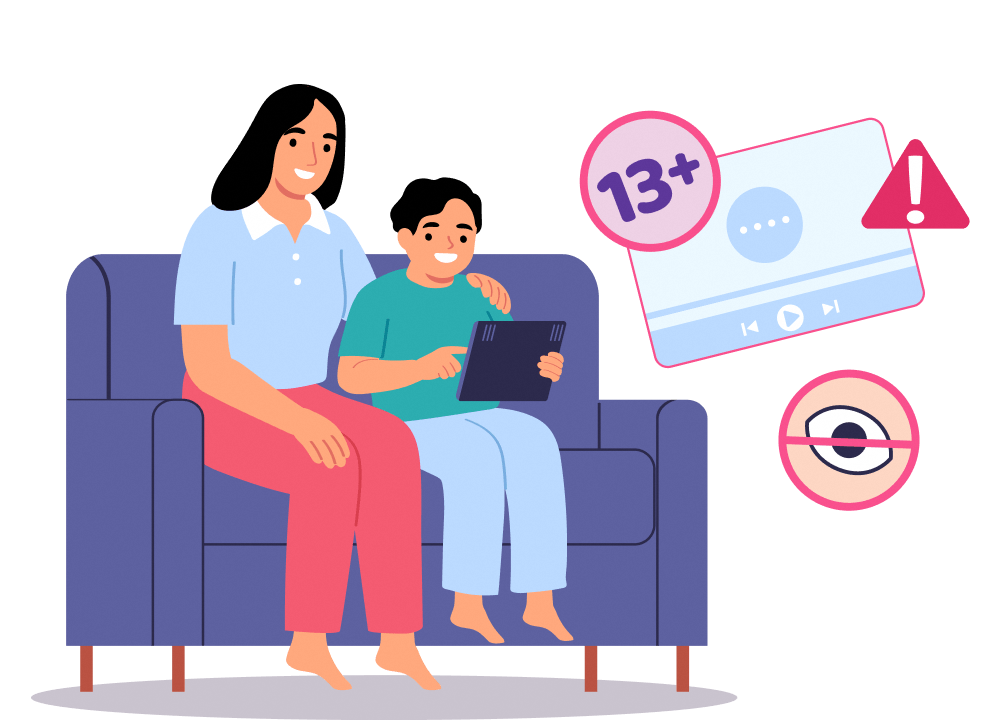Scams are designed to trick you into giving away your money, personal details, or data by offering an attractive deal or false information. Common scams that your child may be exposed to are:
Read more about:
No results found
Inappropriate online content is content that may make your child uncomfortable, upset, or is not age-appropriate for them. Sometimes, such content contains false or misleading information that may trick your child or lead them to commit criminal or dangerous behaviours.
Scams are designed to trick you into giving away your money, personal details, or data by offering an attractive deal or false information. Common scams that your child may be exposed to are:
Read more about:

It is normal to feel angry if you suspect that your child is a victim of a scam. Take a step back and try to understand the concerns, worries, and intentions of your child first by finding out more.
For example:

You find out that your child was going to purchase a product from a stranger whom they have been chatting with online, even though the agreement with you is to not chat online with strangers
You can seek to find out more by asking:

Visit www.scamshield.gov.sg or call the ScamShield anti-scam helpline at 1799 to be well-informed and updated on the latest scams
Think about the risks using Stop-Think-Do and use S.U.R.E. to check the credibility and reliability of information
Check out the Ministry of Home Affairs’ survival guide to scams here

Sexting is sending, receiving, or forwarding sexually explicit content of oneself or others, usually through messages, photos, or videos (also known as sexts).
While there are no laws on ‘sexting’ in Singapore at the moment, there are laws on pornography that make it illegal to store or share pornographic content. These can be applied to sexts as well.

It is okay to feel upset. Take a moment to calm yourself and try to understand the concerns and worries of your child first by asking questions. Once you have enough information, you can focus on the immediate issue and explore ways to manage it.

Although the situation can be shocking and upsetting, you should stay calm and have an open and honest conversation with your child

Ensure the conversation is centred on the content you found inappropriate instead of arguing with your child, especially if they feel upset or angry about you looking at their phone

Having other people around may make it difficult for your child to be honest and open with you
Ensure they are in a comfortable environment before prompting them to start sharing
Acknowledge their feelings, such as shame and humiliation, and give them time to comfortably open up about it.
While it is normal for you to feel overwhelmed, you should take a step back and try to understand the concerns and worries of your child first by asking them questions to find out more. This way you can isolate the immediate issue and think of ways to manage it.






When finding out more from your child, it is important to be mindful about acknowledging their feelings and fears. This will ensure they feel heard and supported.
You can discuss with your child about the steps they can take if they encounter inappropriate online content. Reassure them that you will support them. Let them know they can come to you if they encounter anything that makes them feel uncomfortable or unsure.
Read on to learn how you can guide your child to handle the different types of inappropriate content they may come across online.

Read on to learn how you can guide your child to handle the different types of inappropriate content they may come across online.

Report all inappropriate content to the various social media platform providers. Social media platforms like Instagram, TikTok, and Facebook can remove the content from the feed if it violates Community Guidelines. Under the Code of Practice for Online Safety, which came into effect on 18 July 2023, social media services must inform end-users about the decision or action taken with respect to the report in a timely manner.
Click here to find out more.

Quit the browser or close the browsing tab immediately to stop viewing any of the upsetting inappropriate content.

Share with a parent or other trusted adult about what they saw and how they feel after viewing it.

Online challenges may seem fun, but some may be inappropriate and pose a danger to your child's safety.
Click below to find out more about online challenges and hoaxes, as well as how to stay safe when encountering them.



The default setting for all users on Google SafeSearch is “Blur explicit images”, but explicit text and links may still show in the search results
You can further prevent explicit texts and links from showing up by changing the setting to “Filter explicit results”
How to change default setting on Google SafeSearch to “Filter explicit results”
Open the Google application or browser
At the top right, tap your profile picture or initial settings
Click on SafeSearch and select “Filter explicit results”
Alternatively, type “SafeSearch” in the Google search bar and follow the steps to turn it on
*For the most updated steps, click here.

This will help to prevent your child from receiving unrequested file transfers from strangers outside their contacts list

Your child can review these and decide if they wish to accept the request
Click here to learn how you can apply these settings for each of the different platforms